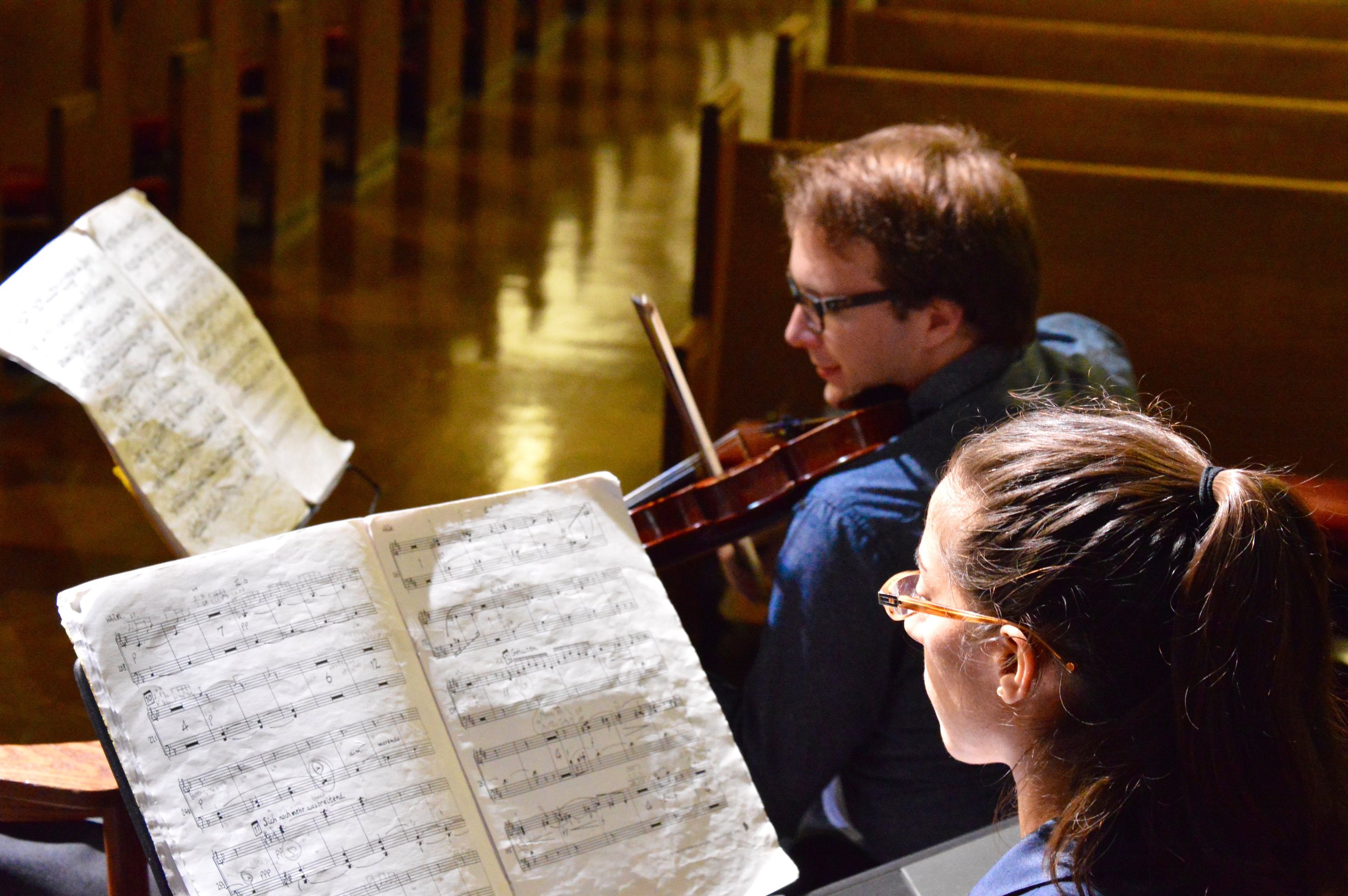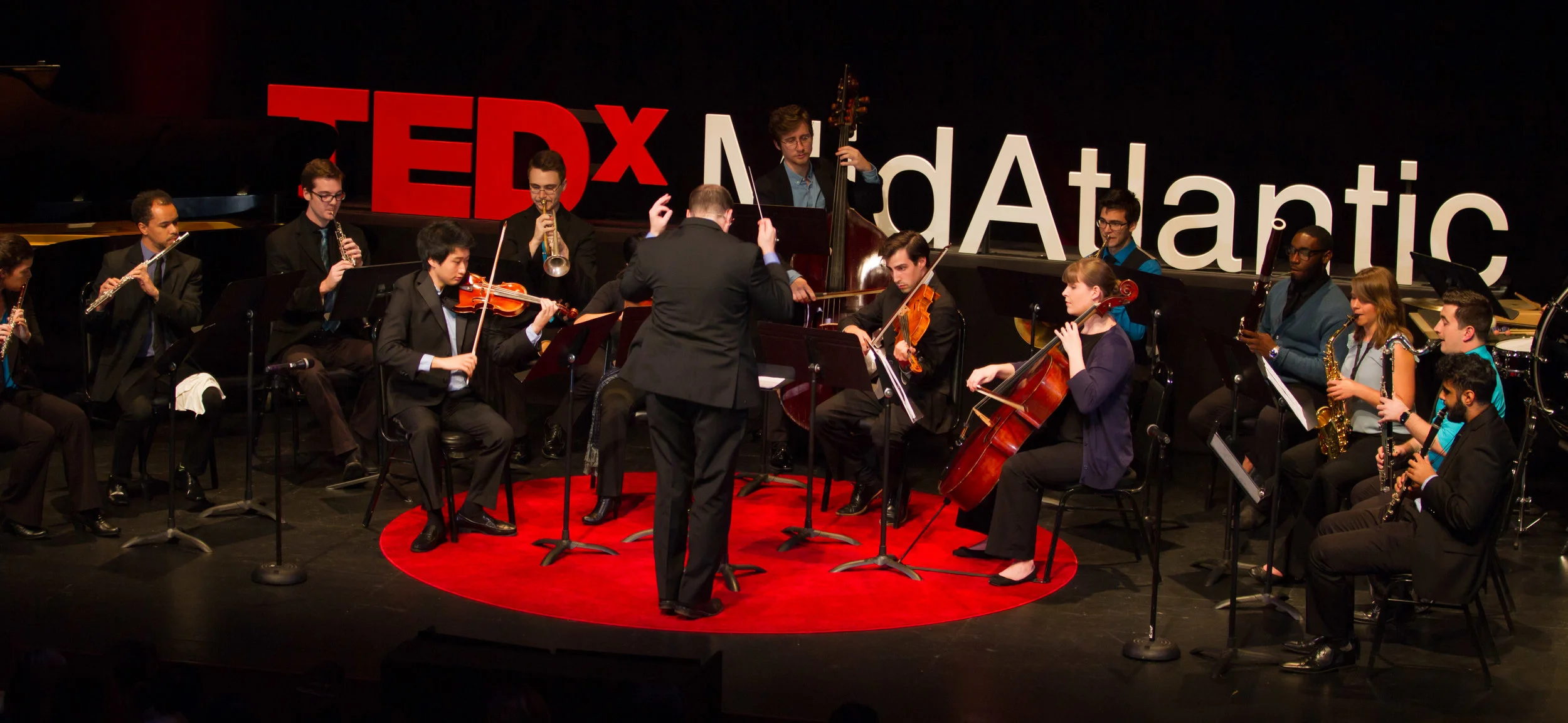Editor's Note: Nicholas Bentz is SNO's featured composer for April 2017. Nick was instrumental in co-founding Symphony Number One in 2015 and served as its first Concertmaster and Executive Director. Nick is SNO's current Composer-in-Residence and an honorary board member.
Approaching Eternity is a semi-autobiographical piece for chamber orchestra commissioned by Symphony Number One and its music director, Jordan Randall Smith. The piece is conceived as one large swath of music, with seven distinct sections that flow into each other without pause. Each of these sections is demarcated by a cryptic ‘totem’ that relates to a piece of visual art, poetry, literature, or even film, that served as a creative impetus for the section. The sections, when woven together, create a life cycle beginning with the first movement: Ode to the Abyss. This opening movement’s purpose is to set the stage for what is to come – to prepare the audience and the player for the journey that they are about to embark upon. There are masses of sound framed by long silences, and melodic fragments float around in a sort of primordial aether. These fragments coalesce and fall apart as the piece tries to gain traction and momentum, eventually coming to the first full and uninterrupted statement of the main melody in the oboe at the conclusion of the movement. A sort of stasis is achieved, only to be disrupted by the next movement, A Night on the Town.
A Night on the Town is capricious and schizophrenic – beginning with a quick back-and-forth between two widely different tempi: one is relaxed and expansive, the other is reckless and unbridled. As the faster, more rambunctious texture takes over, there are no reminders of what’s come before. There’s nearly a rejection of the previous ten minutes, but as the movement comes to a head in a vulgar major tonality, the music freezes in self-reflection as the discarded tempo from earlier returns. This eventually leads to a more stable transition back into the fast tempo, but it returns with a vengeance, moving with more vivacity towards its own dissolution. The piece again returns to a vulgar tonality before collapsing in on itself and ushering in the third section, Gateway.
Gateway is representative of a sort of idealism that we all have and try to achieve in our early adulthood. The movement is calm and rocking throughout, with the main melody from Ode to the Abyss returning in the solo piano. The piano stays on the motive as instruments enter one by one, dovetailing out of the piano and into a cloud of F Major. As the intensity and density build, the bass enters, and all of the melodic lines float up until a lone vibraphone intones a high F.
From here And all being is flaming suffering takes charge, and much like A Night on the Town, violently rejects what’s come before. This fourth movement has something of a macabre and surreal horror in the way that it moves through registers unexpectedly – coming to uncomfortable silences that are destroyed by vicious outbursts. Once the texture builds into a juggernaut, it quickly unravels into a fog out of which the fifth movement emerges.
…you, whom I expected to see at the end of the rails beyond the horizon attempts to intone the search for companionship and intimacy that we all experience. A lone melody is passed around various instruments over a soft piano passage before material from the previous movement interrupts – the piece relapses into its former self. However, it is out of this storm of dissonance that the piece finds the solitude and release it has been searching for. The climax of the piece falls into a quote, which then melds into the sixth movement …and for me the world became beautiful (Apokastasis).
Apokastasis (grk. ἀποκαταστάσεως) is a Greek word meaning "reconstitution," and it marks the beginning of the end for the piece – the movement is extremely sparse, with only a few woodwinds and vibraphone throughout. Motives from throughout are calmly recollected intoned as the strings enter to herald the beginning of the last movement, …until he became the pinpoint of light. This final movement represents the ‘death’ of the piece, as it goes through the throes of accepting its own totality and eventual nothingness. Small pieces of melodies are hidden throughout the dense string textures that dominate the movement. The textures come to a head with the introduction of wine glasses, which hover over a slow and elegiac theme in the piano. There is a sense of acceptance for what is to come as the piece fades into nothingness.
Approaching Eternity, to me, functions like an organism – the listener witnesses its creation, growth, and eventual death. There is an essence of totality and finiteness to the piece (which is inherent in its existence as a piece of music), but that is what is eternal about it: the piece witnesses its own eternity and then moves away from it.
Learn more about Approaching Eternity, check out Ives' Symphony No.3, and purchase tickets to the World Premiere at the dedicated event page: symphonynumber.one/eternity. Follow more details about the composition at symphonynumber.one/rep/bentz-eternity.











Symphony Number One has been named Winner of The American Prize for Professional Orchestras! This award recognizes our 2017-2018 season which, among other exciting projects, including premieres by Carolyn Chen, Jasmine Arielle Barnes, and 14 other…